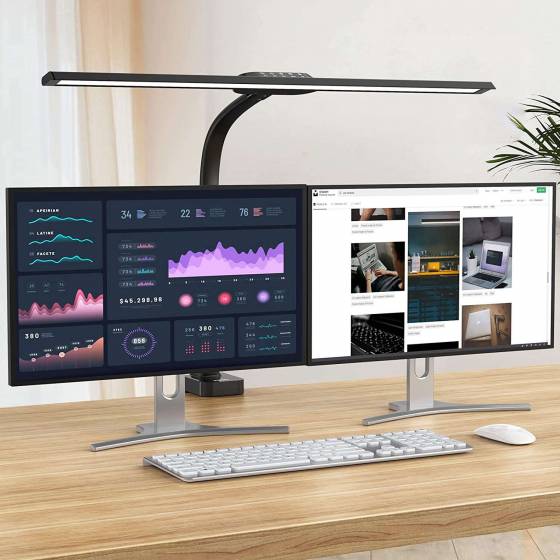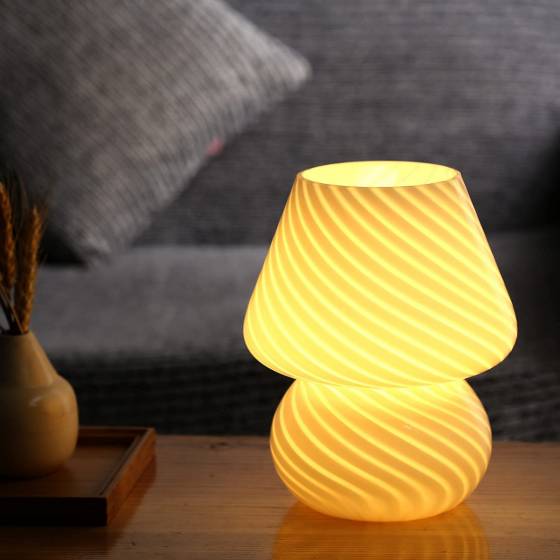Choosing a Desk Lamp – What To Look For

A proper desk lamp is your trusty sidekick partner. So in this article, we will show you how to choose a suitable desk lamp for you.
Desk lamps are designed to give you proper illumination and provide focused light for various tasks – they are very task-oriented.
Buying a new lamp may, at first, sound like a simple task to do. But that isn’t the case.
Finding the best desk lamp that doesn’t strain your eyes because of bright light, while selecting the correct ambiance lighting is tough. When you also include the sheer number of options that go with it, it’s not a simple task.
You need to consider the right type, size, style, and different features to help satisfy your needs in your workspace or home.
If you love doing DIY projects then you can create your very own desk lamp by following our simple guide!
Introduction – How To Choose?
The first question you need to ask yourself when buying a desk lamp is: What do I need a desk lamp for?
People spend quite a lot of time on their desks, whether you work from home every day, or pretend to use your desk every now and then for show.
Having the right desk lamp is a critical element of a good study/work area. So it makes sense to do some research to find the right one for you.
Plus, improper lighting conditions can not only affect your productivity but also ruin your eyes.
The primary use of a desk lamp is practical task lighting – when you need to light up a specific area to make it easier to see what you’re writing, typing, or reading.
On the interior design side of things, a desk lamp can be used for ambient lighting or accent lighting in a room’s composition.
A desk lamp can also be used purely for decorative purposes. This way, it can be designed to look beautiful on your desk, perhaps without the need for a working bulb in it.
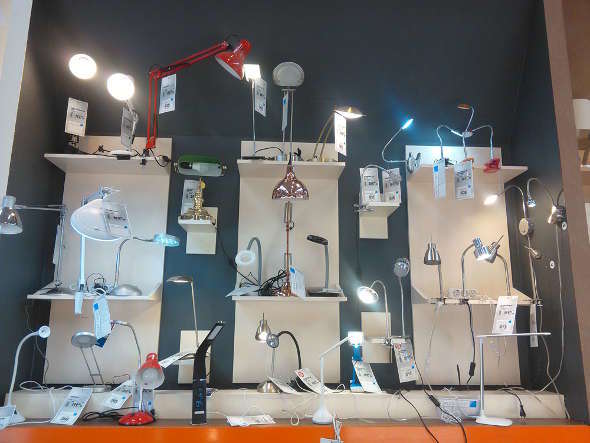
Looking at the picture, we see many lamps that differ in sizes to styles, from types of light to lumens and lux.
If you’re feeling a bit confused, don’t worry. You’re not the only one.
Many people don’t know what to look for when buying a lamp, so this buying guide is specially designed for them and for you. After reading this article, you will have a more clear picture of the process of choosing a good task lamp.
Older desk lamps used incandescent light bulbs – inexpensive, have a warm glow, and have dim settings. Still, they are the least energy-efficient, and they don’t last long.
The newer desk lamps now use LED lights, which have many benefits over the light bulbs of old – they don’t heat that much, use less power, don’t cost too much, and last much longer than the regular light bulbs.
Factors to Keep in Mind While Choosing a Desk Lamp
1. Size of the desk lamp
There is no specific rule for this, but there is a general tip you need to follow.
A desk lamp needs to be proportionate to your desk or workspace – if you have a large desk, a larger lamp is required. If you have a small desk, a small lamp would be appropriate.
You can use this trick along with the rule mentioned above – measure the monitor’s height for your PC or laptop and use that to be your lamp’s approximate height.
2. Type of the desk lamp
Even though desk lamps are the simplest of devices, a wide variety of styles and types are available in the market.
Each of them has its advantages and disadvantages. There are six basic types of desk lamps:
- Adjustable Arm Lamps
- Gooseneck Lamps
- Clip-on Lamps
- Magnifying Lamps
- Banker Lamps
Adjustable Arm Lamps
An adjustable arm allows you to move the light source closer or further away depending on your needs and workspace. Suitable for large desks.

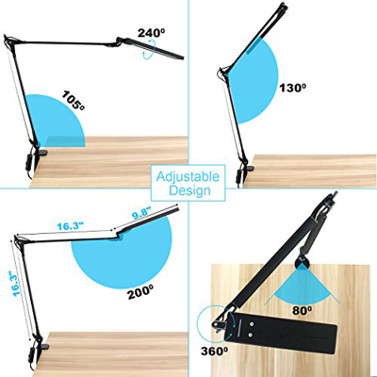
Gooseneck Lamps
Gooseneck lamps have a flexible neck that allows you to rotate and maneuver the lamp into any continuously adjustable position – you are not limited to any preset.
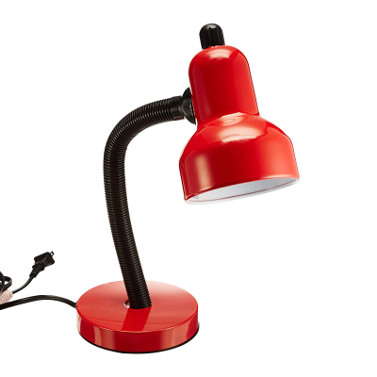
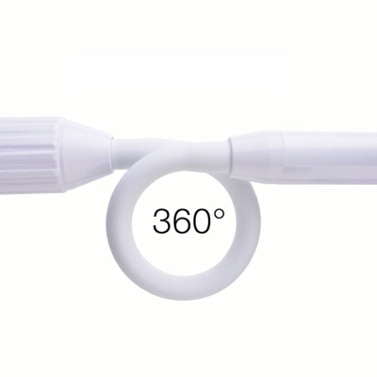
Clip-On Lamps
As the name implies, it has a clip or a C-clamp that can be attached to the edge of your desk or any other work surface.
Very handy if you don’t have a bigger workspace, and it’s small and lightweight. It can be even stored in a drawer.

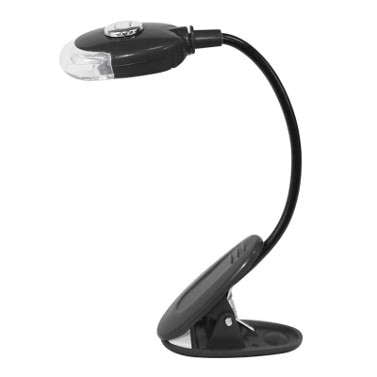
Magnifying Lamps
A magnifying lamp has an illuminated magnifying lens that you can look through and see small details much better.
Magnifying lamps come in handy if you are working on small details or reading tiny letters for an extended time – the lens magnification will reduce eyestrain and fatigue. Perfect for both professionals and hobbyists.
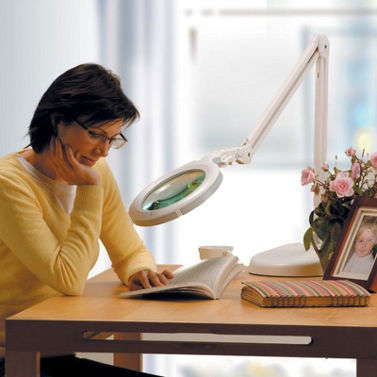
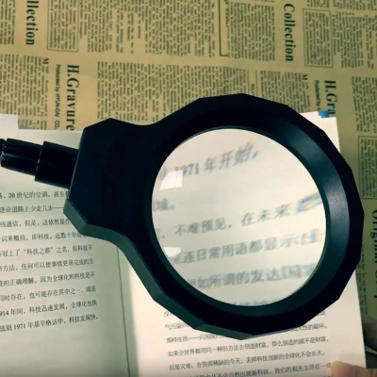
Banker Lamps
Bankers lamp is an iconic and the most classic type of desk lamp.
Traditionally featuring a horizontal green glass lampshade, a polished brass stand, a pull chain switch, and a heavy base, no desk light looks classier than a banker lamp.
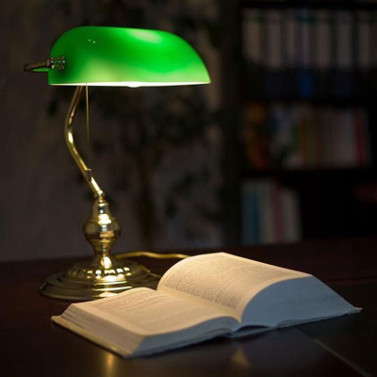
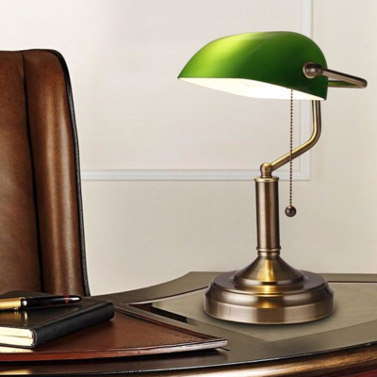
3. Type Of Lighting
Desk lamps are available with a wide variety of light sources, and each of these light sources has its own pros and cons.
The right kind of light bulb can help you illuminate and focus on your work without harming your eyes.
LED and halogen light bulbs provide bright and clear light, but halogen bulbs can get very hot to the touch.
Fluorescent light bulbs(CFL) provide high-contrasting light that is much like natural daylight. Still, they don’t usually have a dimmer feature. Because they use mercury vapor, which isn’t good for health, these bulbs must be disposed of with caution.
Incandescent light bulbs have enhanced color definition and are known to provide a uniform level of light. However, one of the biggest cons of incandescent lamps is that the lifespan is relatively short, as these usually provide light for only up to 1000 hours.
These bulbs are great for ambient lighting applications but are not ideal for task lighting purposes. Therefore, it is best to avoid lamps with incandescent bulbs.
The older you get, the more light you need – the older eyes are more sensitive to glare, headaches, and other nasty things, so choose a lamp with various wattage options and a controlled beam of light.
Here you will find some basic wattage recommendations based on age and type of the light bulb required.
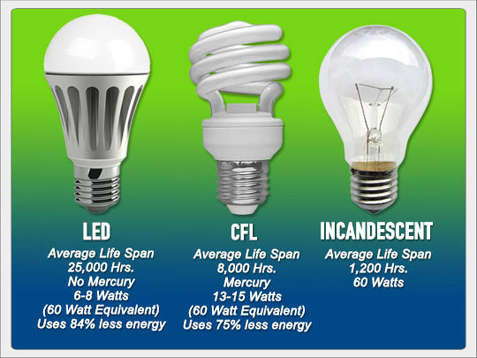
4. Light Brightness & Power
- Foot Candles (FC) – is a brightness measurement of the light at the focused object
- Lumens (lm) is a measurement of the power of the light produced by the light source.
Both are units of photometry. These units are essential because most people confuse the wattage(W) rating of a light bulb with the light power that the bulb will generate.
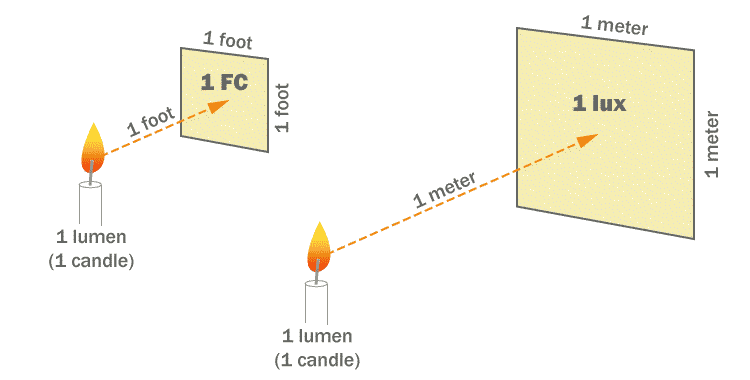
A 10W bulb will not always produce more light than an 8W bulb. You have to also check how many lumens does a bulb have. In short, more lumens means more light a bulb will produce.
Using this formula, you can calculate Foot Candles= lumens ÷ area in square feet.
A counterpart of the Foot Candle is the lux – an international standard (SI), and a 1-foot candle is equal to 10.76 lux.

5. Color Temperature
Color temperature is a measurement of the visual warmth or coolness of white light. It’s measured in units of Kelvin(K).
The higher K, the colder the illumination, and the bluer will the light appear.
2200 – 2700K is considered very warm white, while 4000 -5500K is deemed cool white.
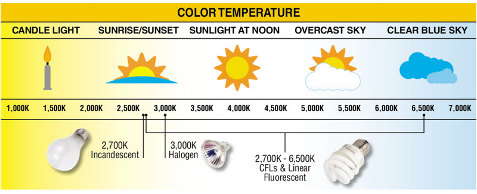
Why is this important? Because the visual appeal of the light affects the atmosphere.
Warm color temperatures are soothing, while cooler color temperatures stimulate brain activities and may increase productivity. So knowing this will help you choose the best type for your workspace.
For task lighting, go for greater Kelvin(K), 4000K and above because it’s more effective and better for illuminating, which means less eye-straining.
If you what to know more or are into photography, video making, and similar, and you want to know how light color affects other objects, you should click here.

6. Extra Features
Not only does a desk lamp shed some light for you, but it can do some other helpful things so it can help you in your day-to-day routine.
Here are some:
- Organizer Compartments – a desk lamp can maximize and better organize a small workspace by having separate compartments for paper clips, pens, pins, pencils, etc.
- Digital Displays – some have a small display with time measurements like clocks, dates, indoor temperatures, and similar features. It comes in handy if your desk is small and you don’t have any room to fit a clock, or you generally don’t have a clock in the room.
- Charging station – we live in an age of internet-of-things. Some desk lamps have a charging station build in its base so you can charge your smartphone, tablet, or any other device as you work.Quick tip – pick one with a 2A output because it will charge your phone faster than one with a 1A output.

7. Practical Considerations
There are several of other considerations when buying a desk lamp, aside from the appearance.
Take note of the following tips to make your next desk lamp purchase a success.
- Working area – the taller the lamp is, the more the area it can light up. Be sure to work out how much space you need to illuminate and ensure the lamp’s stand has enough height.If you have a large desk, you’ll most likely need a taller lamp, and perhaps one with an adjustable stand to reach far across the surface.
- Position and direction – If you share the lamp with a partner or a roommate, or do different kinds of tasks that require different light intensities, you may need the flexibility of a desk lamp that can be angled and manipulated.
- Amount and Intensity of light – The best desk lamp for productivity or studying should be one that offers you enough light to see without straining your eyes.The light should ideally be powerful yet not focused directly on you. As such, the lamp should have an adjustable height, so that you can place it at the right distance from your desk.LED lamps are generally best suited for task lighting, and one of at least 5 to 10 watts is ideal for most desk spaces.

Conclusion
- You need to consider many little things in choosing a proper desk lamp for your workspace and your particular needs. You need to do your homework first before buying anything.
- Many people don’t have a proper lamp or adequate lighting for their work because of many options and for lack of research. They are risking eye fatigue which can cause, in time, damage to their eyes.
- The first step in buying a lamp is to know your working needs. For example, if you are a repairman, you should consider using a magnifying lamp.
If you are an artist or someone who needs to work for hours in the office, you should be using an adjustable arm-type lamp. For kids, a lovely gooseneck-type lamp with some light brightness options will be enough. - Also, be sure to use a bigger lamp if you have a big desk and vice versa. How silly it will look if someone came to your office and saw the size difference between your lamp and your desk.
- Depending on your needs, always use an LED lamp with decent options like brightness adjustments so you can shift the color of the light between working and relaxing. You don’t always need a strong light for all of your work.
Other Useful Links
If you are interested in other lamps that are good for studying, drawing, magnification, eyes, and others, simply click the buttons provided below.
